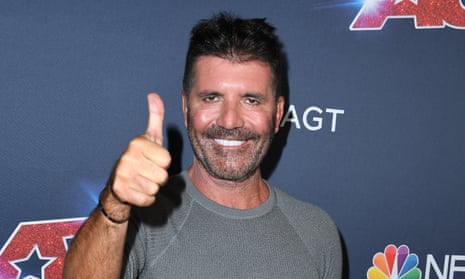The human face, that subsection of appendages living just south of our eyebrows, has rarely been under such attack. Take the Bill Hader deepfake video that went viral this month, in which the comedian does impressions of Tom Cruise and Seth Rogen, and seems to morph into each of them as he goes.
“Deepfake?” you say. “Is that one of those Radio 1 Big Weekend artists who sound like bees attacking a Securicor van?” No, it’s much, much worse than that. Deepfake is artificial-intelligence-based human image synthesis. It robs the essence of your face and plasters it on to someone else’s. Not the whole thing; it’s no clumsy cut-and-shut job. Deepfake skims the very magic of you: the way your eyes narrow as you reach for a word; the angle at which your tongue skims your teeth as you inhale; the precise way your nostrils flare as you reach a punchline. Your unique one-in-7.53 billion human face. It extracts these things, plasters them on to someone else’s body and causes havoc.
There is an end-of-days quality to experiencing it for the first time. Hader “becoming” Cruise did not create global ructions because it was terrifically rude or cutting about the Mission: Impossible megastar, but because watching it, you know instinctively that here lies the potential for a special level of evil. Fun at first, yes. But a tool to aid fraud, coercion, historical revisionism and civil unrest. Suddenly all the bets are off with regards to who really said or did what.
Physically, I felt a little queasy, like the dizziness one feels watching a long David Lynch Red Room reverse speech. Surely, there should be some law to stop this; some guidelines. But the horse has already bolted. Our faces can be used for anything. The future will be one long and terrifying version of Shaggy’s It Wasn’t Me.
Elsewhere, as Cruise was having his face faked, Simon Cowell unveiled his new tight-and-bright visage on the America’s Got Talent red carpet, and caused shockwaves of his own. This isn’t my moment to snipe at silly celebrities for their attempts to stay youthful: I empathise fully. I’m far from famous, more of an occasionally recognised national nuisance, but still, a decade of feedback that I am too plump, too angular, too droopy, too beaky and too weird does occasionally take its toll. I watch the faces of people like Cowell, like Renée Zellweger, like Madonna gradually morph with interest – because wherever they stray, with their nips, tucks or needles, many of us will feasibly follow.
Cowell, about to turn 60, considerably wealthy and owner of one of the world’s most recognisable faces, has pretty much given up his unmistakable self. He is in there, still breathing, yet it is as if something untoward has swallowed him. A Hans Christian Andersen tale where the wolf eats Daddy, then casually puts on his bootcut jeans. Cowell’s hazel eyes are still handsome, albeit slightly sad, perhaps because they’re being squeezed by his very tight eyelids. There’s still a smattering of the man around the apples of his cheeks. Yet the lips seem thinner, the brow lowered. Cowell’s teeth are now the wind-up joke shop set one receives in a Christmas stocking. Everything is just a fraction different, but with the human face all these fractions add up to make the perfect sum of you. If Cowell were to be kidnapped and the negotiator demanded a recent photo just to check he was alive, these pictures would reassure nobody.
Again, my head felt rather swirly. Can no one else see we are in full Death Becomes Her territory now? As the actor and writer Rufus Jones observed so succinctly about Cowell: “He doesn’t look 10 years older. He doesn’t look 10 years younger. Is it possible to look 10 years sideways?” It’s the perfect description of how very famous people age; the side-slide, not into younger, prettier people, but into whole new personae.
Take the freshly primped, Madame X-era “Madonna”. The artist is still there under her expensive veneer, very much alive and kicking, still making extremely good music, and I will fight anyone in a barroom brawl to defend that position. Yet there are more accurate drag artist Madonna Ciccones working out of the West Village.
In the future, will we all be like naughty soap actors who have brought shame on the TV studio and been abruptly replaced? Will we meet old friends for dinner with a real sense of intrigue over who will turn up? Maybe we’ll stay at home in jogging bottoms and send our deepfakes to chat online with other deepfakes.
Fast forward and your dad, who is 75 but looks like a 45-year-old third-degree-burns victim, will sign over your inheritance to his “girlfriend”, who will turn out to be a deepfake Lady Gaga who’s been scamming him on Facebook. The terrifying Russell T Davies dystopia Years And Years will seem like a gentle parochial comedy.
On the other hand, there is still time to fight back, to treat our birth-allotted faces like something sacred. It will be difficult, and things and people may have to get ugly, but it might just save our souls.

